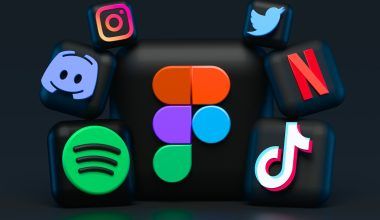The question of “how much per stream” has become a hot topic for anyone involved in the music industry, content creation, or even curious listeners. Streaming platforms have revolutionized the way we consume media, but they’ve also raised questions about fairness and income. If you’ve ever wondered how much artists and creators earn per stream, this guide is here to break it all down.
Let’s explore how platforms like Spotify, Apple Music, and YouTube pay their contributors, and what factors affect those earnings. By the end, you’ll have a clear picture of what “per stream” really means.
What Does “Per Stream” Mean?
At its core, “per stream” refers to the amount of money an artist or creator earns each time their content—like a song or video—is played on a streaming platform. It sounds straightforward, but the reality is more complex.
Streaming platforms don’t operate on a fixed rate. Instead, they use various calculations based on subscription fees, ad revenue, and user behavior. The result? Earnings can vary widely from platform to platform and even from month to month.
If you’re a music artist, for example, a single stream on Spotify might earn you fractions of a cent. While that may seem small, those streams can add up over time, especially for popular tracks.
How Do Streaming Platforms Work?
Before diving into the numbers, it’s important to understand how streaming platforms operate. Services like Spotify, Apple Music, and YouTube make money through:
- Subscriptions: Paid users contribute a significant portion of revenue.
- Advertisements: Free users generate income through ad views and clicks.
- Partnerships: Platforms may also earn through collaborations with brands.
This revenue is then distributed among rights holders, such as record labels, publishers, and artists. However, the actual payout per stream depends on many variables, which we’ll explore next.
Factors That Affect How Much Per Stream
If you’re asking “how much per stream,” you should know there’s no one-size-fits-all answer. Here’s why:
- Platform Rates
Each streaming platform has its unique payout structure. For instance, Spotify pays differently than Apple Music or YouTube. - Geographical Region
Where a listener is located impacts how much an artist earns. Countries with lower subscription fees often have lower payouts. - User Type
Earnings per stream can vary depending on whether the listener is a free user (ad-supported) or a premium subscriber. - Royalties Splits
Artists often don’t receive the full payout, as they may need to share it with labels, producers, and other stakeholders. - Number of Streams
Higher play counts can sometimes lead to better deals with platforms, but the base rate still applies.
Streaming Payouts by Platform
Let’s get to the specifics of how much per stream various platforms pay.
Spotify
Spotify is one of the most popular music streaming platforms. On average, it pays artists between $0.003 to $0.005 per stream. That means you’d need roughly 250 to 300 streams to earn $1.
Apple Music
Apple Music pays better than Spotify, with an average of $0.01 per stream. While it’s still a fraction of a cent, the payouts can accumulate more quickly.
YouTube
YouTube operates a bit differently, as it relies heavily on ad revenue. Artists and creators earn an average of $0.001 to $0.002 per view, but this can vary based on ad engagement.
Tidal
Tidal, known for its artist-friendly reputation, offers higher payouts—around $0.0125 per stream. While its audience is smaller, its rates are more competitive.
Amazon Music
Amazon Music pays approximately $0.004 per stream, similar to Spotify, but it varies depending on the listener’s subscription tier.
Why Are Streaming Rates So Low?
If you’ve ever felt frustrated by how little artists earn per stream, you’re not alone. There are several reasons why streaming payouts are minimal:
- High Operating Costs
Platforms need to cover expenses like licensing fees, server maintenance, and marketing. - Massive User Base
With millions of users worldwide, the revenue is spread thin. - Royalties Distribution
Payments are split among multiple parties, leaving less for individual artists. - Free Users
Platforms like Spotify offer free tiers supported by ads, which generate less revenue than paid subscriptions.
How Can Artists Earn More?
If you’re an artist wondering how to boost your streaming income, there are ways to maximize your earnings:
- Promote Your Work: The more streams you get, the higher your payout.
- Leverage Multiple Platforms: Don’t rely on just one service; diversify your reach.
- Engage Your Audience: Active fans are more likely to stream your content repeatedly.
- Negotiate Deals: If you’re signed to a label, work on getting better royalty splits.
The Future of Streaming Payouts
The landscape of streaming is constantly evolving. As platforms grow and adapt, there’s hope for better transparency and improved rates. Some services are exploring alternative models, such as user-centric payouts, which distribute revenue based on individual listening habits.
Final Thoughts
The question of “how much per stream” may not have a straightforward answer, but understanding the factors at play can help artists and listeners appreciate the complexities. Whether you’re streaming music, videos, or podcasts, every play contributes to the creator’s journey.
By staying informed, supporting your favorite artists, and advocating for fair pay, we can all help shape a future where creators are rewarded more equitably for their work.
So, next time you hit “play,” remember: every stream counts.
For further reading, explore these related articles:
- The Best Romantic Songs of All Time That Touch Your Heart
- Discover the Magic of Duet Songs: Two Voices, One Soul
For additional resources on music marketing and distribution, visit DMT Records Pvt. Ltd..






